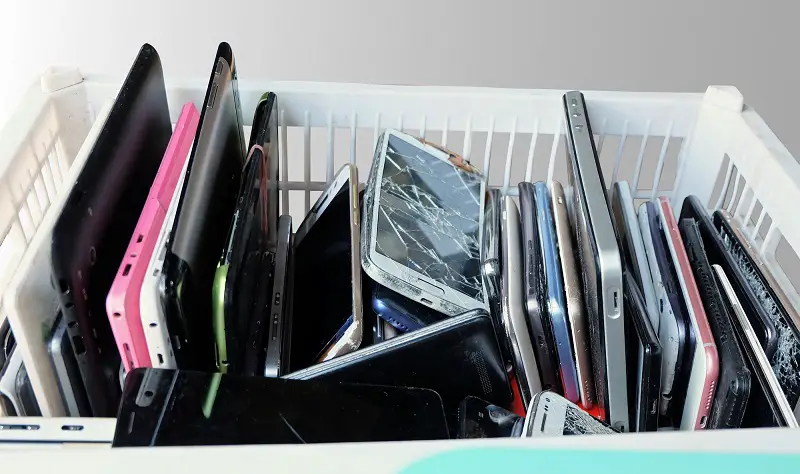Businesses strive to equip employees with the latest smartphone and computer technologies to maintain a competitive edge. However, with the rapid pace of new product releases, strategic planning of device upgrades and disposal is essential.
This guide provides practical strategies to help businesses responsible for mobile technology refresh cycles. By taking a systematic approach to upgrades and end-of-life disposal, they can supply employees with the necessary productivity-enhancing tools while demonstrating social and environmental responsibility.
Steps In Planning For Mobile Device Upgrades And Disposal
Upgrading and getting rid of mobile devices requires careful thinking through each step of the process. This helps ensure things go smoothly and the devices are properly cared for.
Step 1: Implement a robust asset-tracking system. Implement a mobile device lifecycle management system to track purchase dates, warranty details, user assignment history, and disposal records. These streamlines upgrade planning and budgeting. An asset-tracking system easily identifies lost devices or those due for replacement.
Step 2: List down all mobile devices. If your business doesn’t have a mobile device lifecycle management, inventory all mobile devices issued to employees. It should include the model name, operating system, device age, and current condition and functionality. This helps assess which devices are candidates for upgrading or disposal.
Step 3: Schedule mobile device upgrade. Enterprises should map out a timeline for upgrading devices using the information gathered in the inventory assessment. Ensure its compatibility with existing business infrastructure, costs of new devices and accessories, and business needs. Consult with department heads to ensure upgrades match workflow requirements.
Step 4: Budget financial resources. Allocate financial resources covering new device and accessory costs plus data transfer expenses. Account for proper e-waste disposal costs as well. This prevents budget overruns.
Step 5: Partner with a mobile device provider. Leveraging mobile vendor partnerships generates bulk purchase discounts and preferential pricing while simplifying major technology refresh rollouts through turnkey staging, configuration, and deployment support services.
Carriers can also structure customized installment financing and bundled connectivity discounts across new device fleets to ease capital expenditure strains for enterprises.
Step 6: Back up all important documents. Before upgrading or disposing of any mobile devices, fully back up all critical data stored on them. This includes contacts, documents, photos, videos, and essential applications to prevent potential data loss when transitioning to a new device.

Step 7: Explore environmentally responsible disposal options. When it comes to mobile disposal, utilize options like certified e-waste recycling. This reduces electronic waste and safely disposes of hazardous materials. Also, consider donating working devices to charities.
Step 8: Sustainability initiatives. Explore incorporating sustainability initiatives into your mobile device upgrades and disposal processes. This involves selecting devices that can be used longer before replacement, have energy-efficient features, or are made of eco-friendly materials.
Ways Of Mobile Device Disposal
Dumping mobile devices in the trash is unethical, as it may cause environmental damage and health hazards. Here are responsible and sustainable practices for mobile device disposal:
- Take Advantage Of Buy-Back Programs
Many device manufacturers and carriers offer trade-in or buy-back programs, allowing enterprises to receive value for outdated inventory. Devices are refurbished and resold rather than landfilled, extending useful life.
- Sell
Selling used devices allows businesses to recover costs and make money back on mobile upgrades, especially devices just one to two years old. Obtain an accurate appraisal of each device’s fair market value based on model, age, and functionality. Even if the mobile device is no longer working, some shops still buy the unit for its parts.
- Look For Local Cell Phone Recycling Centers Near You
Businesses can contract certified e-waste recycling firms to properly dismantle obsolete devices and recover usable raw materials in an eco-friendly process, minimizing environmental impact.
Search online directories or call nearby facilities to ask if they specifically recycle and dispose of electronics like mobile phones and tablets. Make sure they use proper e-waste management techniques.
- Use Recycling Kiosks
It’s a quick and easy option to stop by and deposit smartphones, batteries, chargers, and more to be recycled correctly. Kiosk recycling is free and keeps hazardous e-waste from landfills and the environment. Certified e-waste recyclers properly dismantle devices and recover usable materials, minimizing environmental hazards.
- Donate
Refurbished devices donated to schools and non-profits promote digital access and skills development for underserved groups with limited budgets. This embodies social responsibility and continued purpose for outdated inventory.
Conclusion
Responsible mobile technology lifecycle management is crucial for businesses upgrading large device fleets. Trades-ins, recycling programs, and donations demonstrate an organization’s commitment to sustainability while supplying employees with the latest tools. Companies can execute smooth, eco-conscious tech refresh cycles by systematically addressing reuse and disposal.




